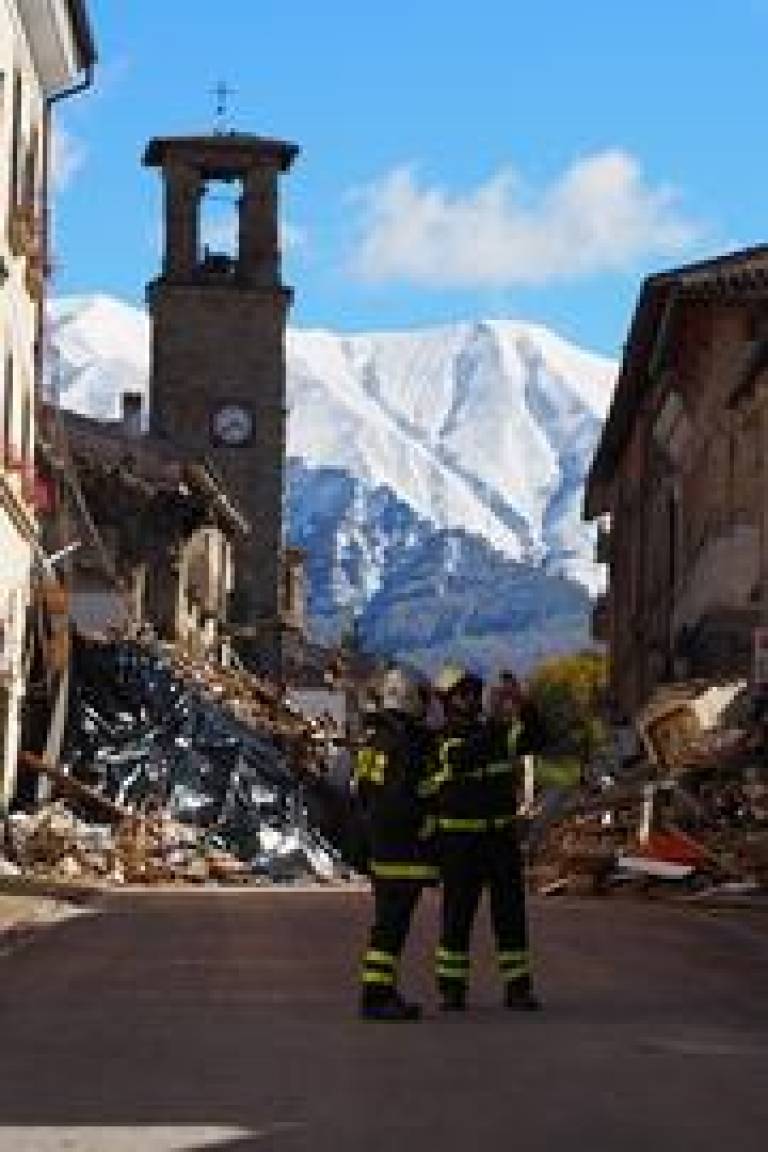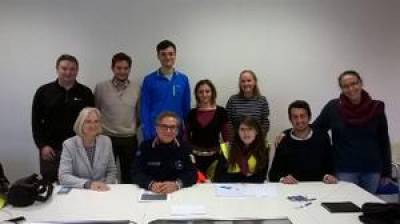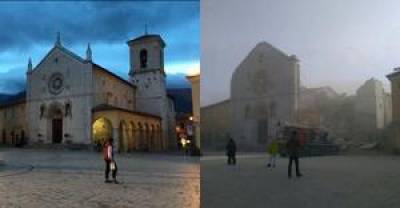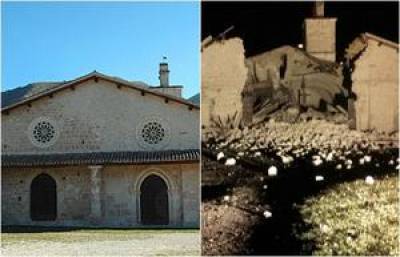EEFIT and EPICentre lead ongoing field mission into Italian earthquakes
1 November 2016
On the 24th of August 2016 at 3:36 am local time, a Mw 6.
 2 earthquake struck a mountainous region of central Italy on the borders between Umbria, Marche, Lazio and Abruzzo, burying residents under mounds of masonry in the hardest-hit towns of Amatrice, Accumoli Pescara and Arquata del Tronto.
2 earthquake struck a mountainous region of central Italy on the borders between Umbria, Marche, Lazio and Abruzzo, burying residents under mounds of masonry in the hardest-hit towns of Amatrice, Accumoli Pescara and Arquata del Tronto.
Nearly 300 people were killed as a result of the earthquake, with many others displaced from their homes.
The Earthquake Engineering Field Investigation Team (EEFIT) launched a field mission, led and organised by Professor Dina D'Ayala from CEGE-EPICentre, to investigate various aspects of the seismic events, involving experts from both industry and academia.
The three main aspects investigated were the ground surface effects caused by the earthquake, the structural damage of masonry buildings and bridges and the effects of the earthquake on reinforced concrete structures and infrastructure. The damage data collection was carried out through the use of rapid visual survey forms and a web-based digital tool called Log-IDEAH, developed by Professor D'Ayala.

The activities on site were in collaboration with the Seismic Risk Group of the Italian Civil Protection, Protezione Civile, and other academics from University of Bergamo, University of Ferrara, University La Sapienza of Rome and University of Benevento.
The team was made up of Dr Carmine Galasso and PhD student Valentina Putrino from CEGE-EPICentre; Professor David Alexander, Dr Joanna Walker and PhD students Zoe Mildon and Serena Tagliacozzo from UCL's IRDR (Institute of Risk and Disaster Reduction); Dr Flavia De Luca from the University of Bristol; Dr Domenico Lombardi from the University of Manchester; and Giuseppe Del Gobbo, a PhD Student from the University of Oxford.

From the industry, the team included Paolo Perugini from Arup, Andrea Totaro from Mott MacDonald, Dr Davide Pedicone from Ramboll, Dr Tristan Lloyd from AIR Worldwide and Elizabeth Morgan from Sellafield.
The group's research activities will continue over the upcoming months, by compiling geophysical data of the seismic event, and further analysis of the damage data collected. Findings will be presented in due course at an evening presentation at the Institute of Structural Engineers, and will be published in a comprehensive report.

The chain of seismic events is still continuing. On the 26th of October, a magnitude 6.1 earthquake struck the city of Norcia and its surroundings, causing damage to buildings and churches which survived the shaking on the 24th of August. In the case of San Salvatore Church located in Campi di Norcia, it was declared unsafe due to the first seismic event in August, but following the more recent shocks, the church has now lost its roof and main facade. The further shock of 30th October of magnitude 6.6 caused the collapse of main churches in Norcia, which had been visited by the team, and further collapse in Arquata and Amatrice. A peak ground acceleration of 0.7 g was recorded in Arquata del Tronto, the highest ever recorded on Italian soil. Thankfully no death are reported for these two last events, but the loss of cultural heritage is important. This emphasises the need to better understand the cumulative damage caused by series of earthquakes.
 Close
Close

